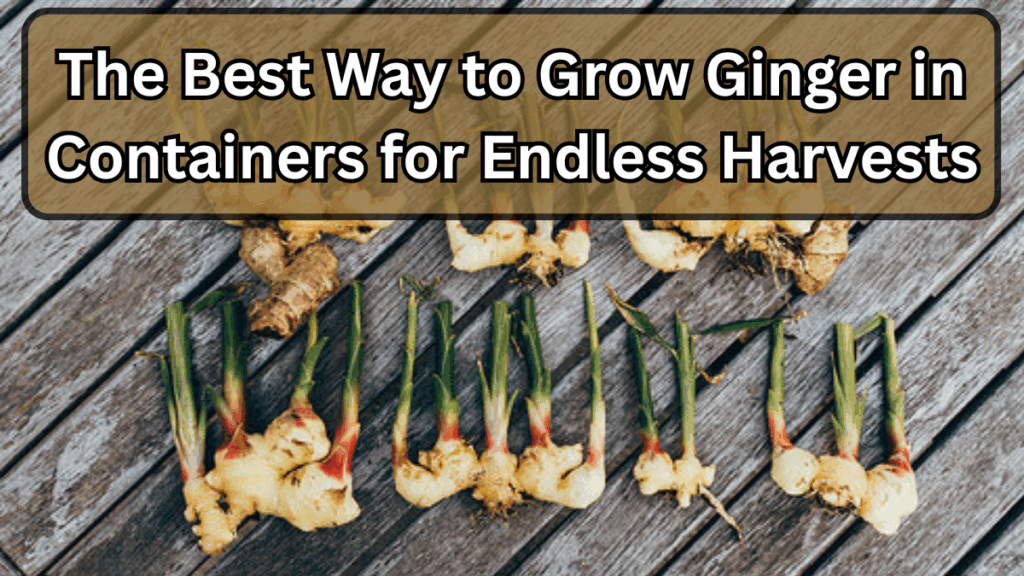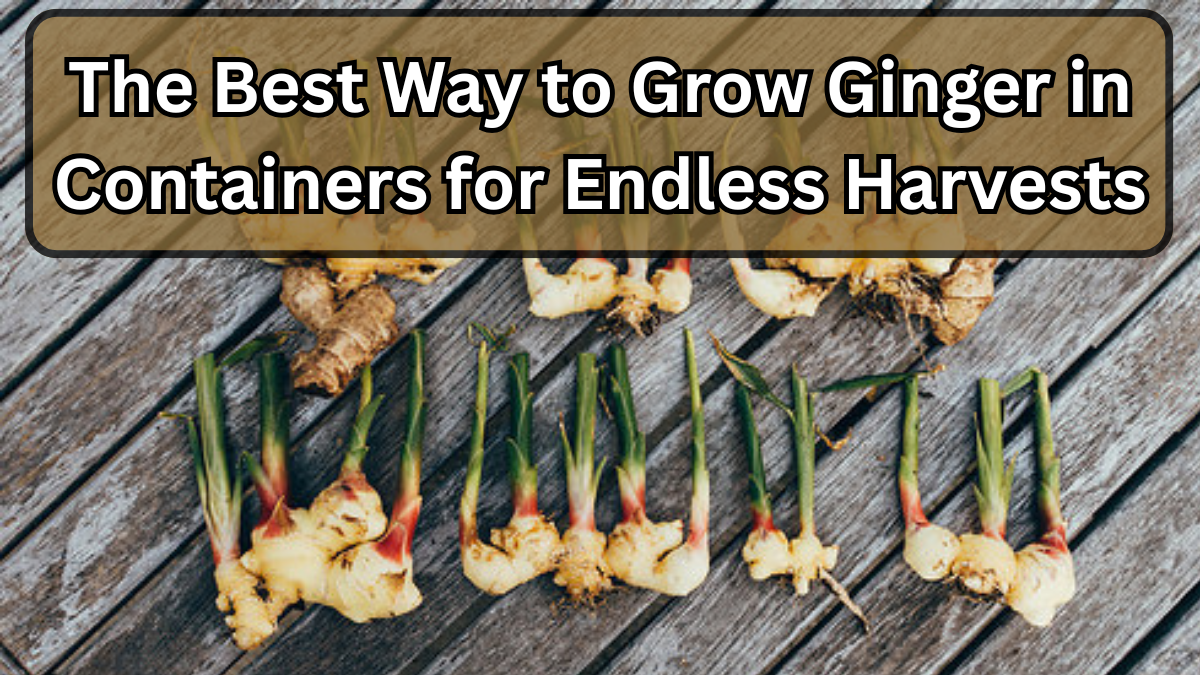Growing ginger at home can be incredibly rewarding. With the right techniques, you can grow ginger in containers and enjoy fresh, aromatic rhizomes all year round. This guide will help you understand everything—from choosing the right ginger rhizome to harvesting your crop successfully.

Choosing the Right Ginger Rhizome
The journey to a healthy ginger harvest begins with selecting a quality ginger rhizome:
-
Look for plump, firm rhizomes with visible growth buds (also called “eyes”).
-
Avoid shriveled or moldy pieces, as they won’t sprout well.
-
Organic rhizomes are preferred since they are free from chemical treatments that can hinder growth.
Selecting the Ideal Container
The size and type of container are crucial when you grow ginger in containers:
| Factor | Recommendation |
|---|---|
| Pot size | Minimum 12 inches deep and 14 inches wide for proper rhizome expansion |
| Drainage | Must have holes to prevent waterlogging |
| Material | Terracotta or plastic pots work best; terracotta allows better airflow |
| Mobility | Consider lightweight pots if you need to move them for sunlight or shade adjustments |
Preparing the Perfect Soil Mix
Ginger thrives in nutrient-rich, well-draining soil. The ideal soil mix includes:
-
2 parts garden soil or loam
-
1 part compost or well-rotted manure
-
1 part sand or perlite for proper drainage
This blend ensures your ginger roots grow strong and healthy while avoiding water stagnation.
Planting Your Ginger Rhizome
Follow these steps to plant your ginger rhizome successfully:
-
Soak the rhizome in water for 24 hours to stimulate growth.
-
Plant it 2–3 inches deep with buds facing upward.
-
Space multiple rhizomes at least 6 inches apart to allow room for expansion.
-
Water lightly after planting and keep the soil consistently moist.
Light, Shade, and Watering Needs
Ginger prefers indirect sunlight and moderate warmth:
-
Place your container where it gets partial shade; direct sunlight can scorch the leaves.
-
Keep the soil evenly moist but never waterlogged.
-
Mist the leaves occasionally if you live in a dry climate.
Fertilization for Maximum Harvest
To encourage continuous growth:
-
Use a balanced, organic fertilizer every 4–6 weeks.
-
Liquid seaweed or fish emulsion works well for container-grown ginger.
-
Stop fertilizing a month before harvesting to allow rhizomes to mature fully.
Harvesting Your Ginger
One of the joys of container gardening is the ability to harvest on your own schedule:
-
Ginger can be harvested partially after 4–5 months for young, tender rhizomes.
-
For mature rhizomes, wait 8–10 months until leaves turn yellow and begin to die back.
-
Gently dig around the rhizome to avoid damaging it, then store in a cool, dry place.
Tips for Continuous Harvests
To enjoy a nearly endless supply:
-
Leave a few buds in the soil to sprout new growth after each harvest.
-
Refresh the soil annually to replenish nutrients.
-
Rotate containers to maintain healthy root development.
FAQs About Growing Ginger in Containers
1. How much sunlight does ginger need in containers?
Ginger thrives in partial shade, ideally 2–5 hours of indirect sunlight daily. Too much direct sun can burn the leaves.
2. Can I use any soil to grow ginger?
No. Use a rich, well-draining soil mix with compost and sand to ensure healthy root growth.
3. How often should I water ginger in a pot?
Keep the soil consistently moist but not waterlogged. Mist leaves occasionally if air is dry.
4. When is the best time to harvest ginger?
Young ginger can be harvested after 4–5 months, but for full-flavored, mature rhizomes, wait 8–10 months.
Click here to learn more
